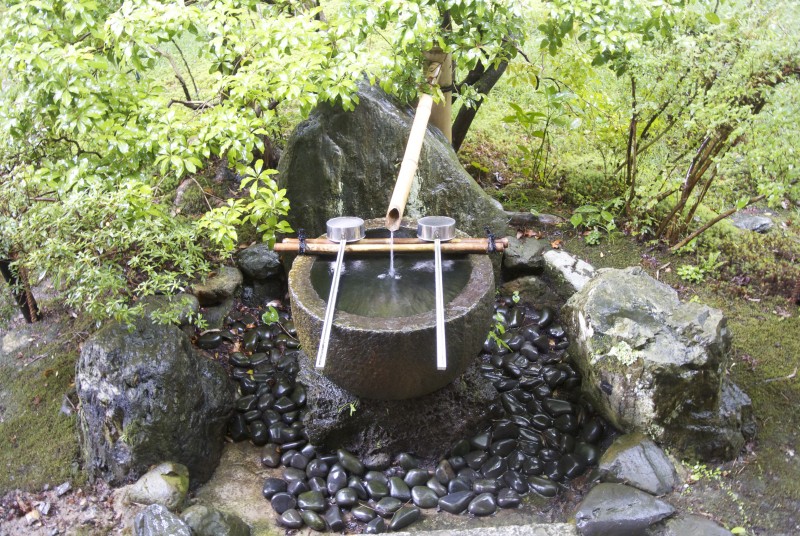 One of the great appeals of Shinto is the attractiveness of the aesthetics involved. These extend to the architecture, the clothing, the religious tools, the rituals, the offerings, even the festivals. And along with these are the performances of dance and music for the entertainment of the kami.
One of the great appeals of Shinto is the attractiveness of the aesthetics involved. These extend to the architecture, the clothing, the religious tools, the rituals, the offerings, even the festivals. And along with these are the performances of dance and music for the entertainment of the kami.
The perfection of the aesthetic aspect is part of the Japanese cult of beauty. It’s often said that the culture is not characterised by an intellectual or moral slant. Aesthetics not ethics is the national bent.
Appreciation of beauty can evoke a sense of the sublime that is spiritual in nature. It’s not surprising then that religion and the arts are closely linked. As Keats said, ‘Beauty is truth, truth beauty, – that is all/Ye know on earth, and all ye need to know.’

In the passage below, taken from Maria Popova’s Brainpickings website, mention is made of how art inculcates wonder. Given that Shinto is a religion of awe, it can be seen how closely appreciation of art is intertwined with the religious impulse. True beauty leads to a sense of transcendence. Ars longa vita brevis.
********************
Alain de Botton writes in How Proust Can Change Your Life: “For Proust, the great artists deserve acclaim because they show us the world in a way that is fresh, appreciative, and alive… The opposite of art, for Proust, is something he calls habit. For Proust, much of life is ruined for us by a blanket or shroud of familiarity that descends between us and everything that matters. It dulls our senses and stops us appreciating everything, from the beauty of a sunset to our work and our friends.
Children don’t suffer from habit, which is why they get excited by some very key but simple things – like puddles, jumping on the bed, sand, and fresh bread. But we adults get ineluctably spoiled, which is why we seek ever more powerful stimulants, like fame and love.
The trick, in Proust’s eyes, is to recover the powers of appreciation of a child in adulthood, to strip the veil of habit and therefore to start to look upon daily life with a new and more grateful sensitivity.
This, for Proust, is what one group in the population does all the time: artists. Artists are people who strip habit away and return life to its deserved glory.”
True art reawakens us to the wonder of everyday life and appreciation of the sheer marvel of existence that lies even in the most banal of occurrences.



Excellent posting – learned a lot
A few months ago I came across an ex-library book by Haruki Kageyama called ‘The Arts of Shinto’, published in 1973. With such an intriguing title I had to buy it to learn more about the subject. The book focuses on art forms that developed between the eighth and nineteenth century. Sculptures, paintings (especially mandalas) and shrine treasures receive the most attention. It’s a fascinating, well researched and somewhat ‘dry’ book. While subjects like awe, wonder and beauty are not a feature, the book provides a scholarly overview of some (not all) of the items that could attract such acclaim.
How interesting. I haven’t come across that book, and it’s a most interesting title. Arts like sculpture and painting are usually associated with Buddhism, and in that respect it’s interesting you mention mandalas as it’s clearly the syncretic past that inspired much of the art. My impression is that Shinto per se is more to do with crafts…